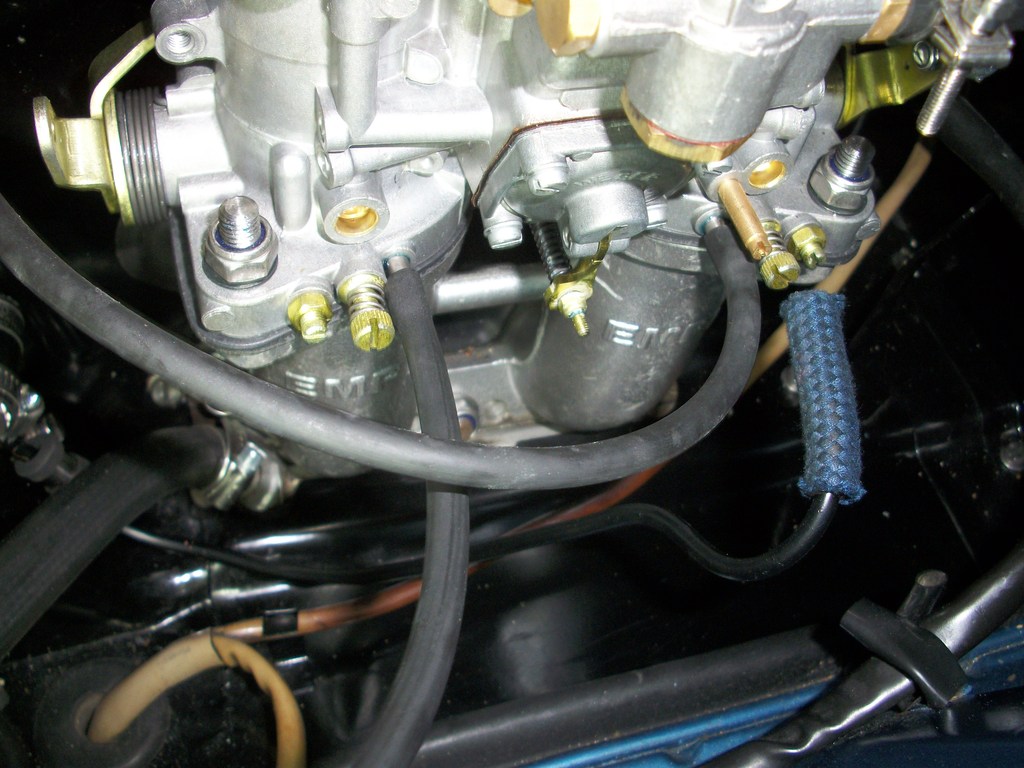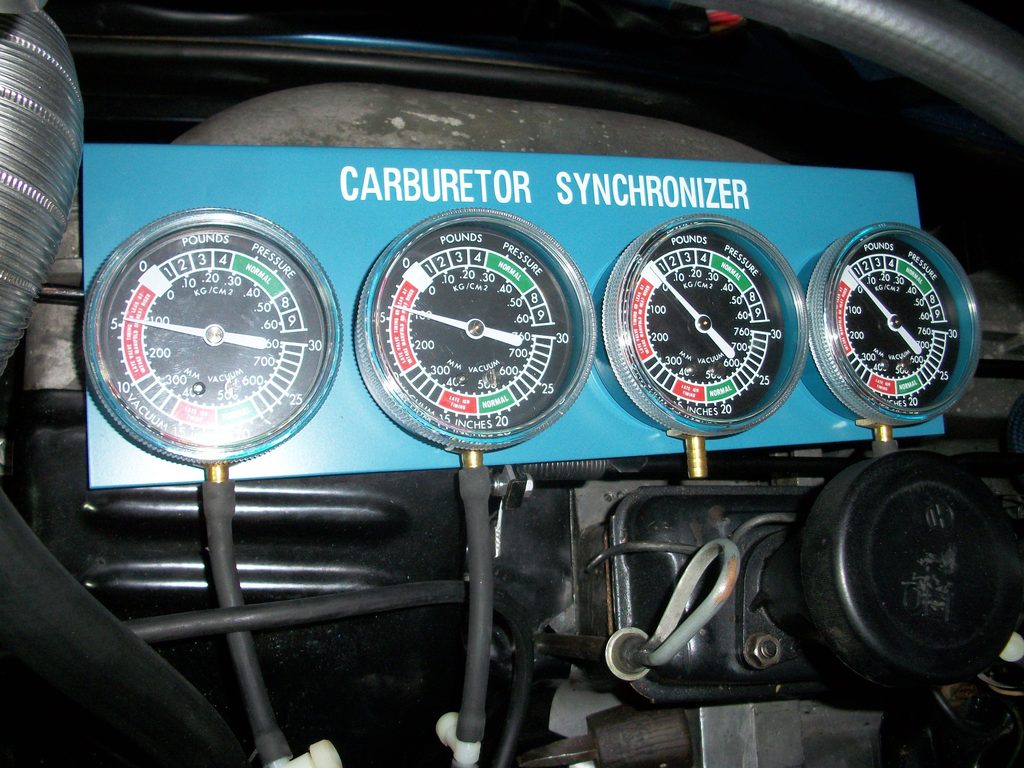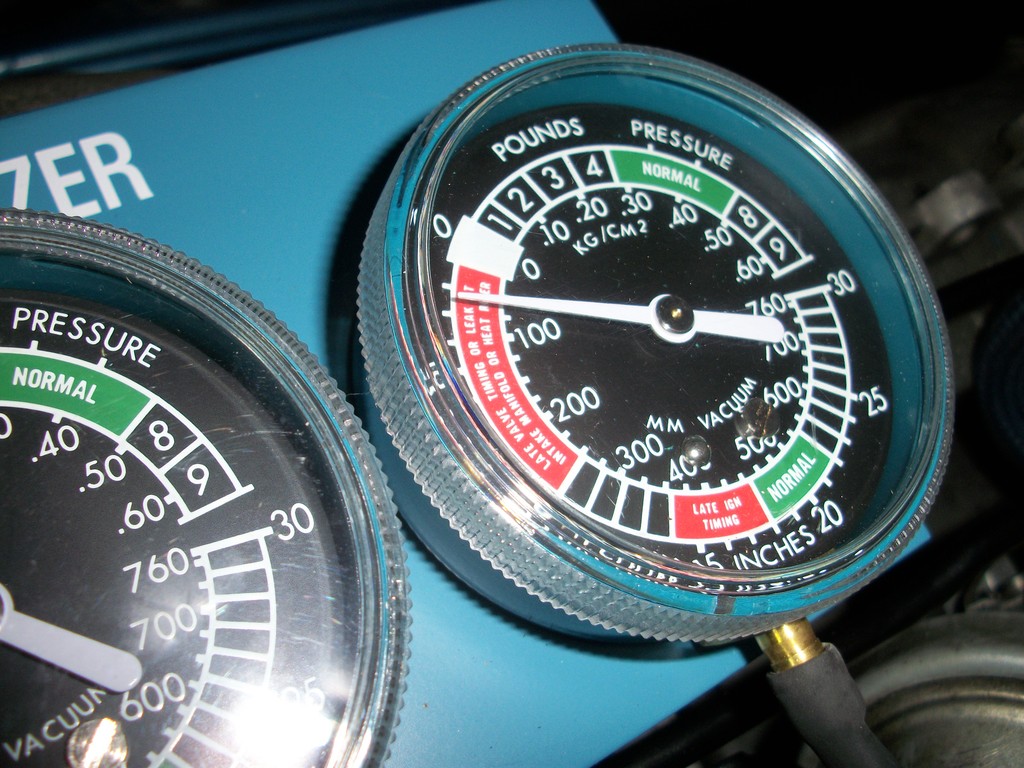It would be nice to keep the original dizzy (if I can get it to work well) with the carb conversion. It’s a bit like one of those Top Gear challenge specials where if the main muscle car fails they get the VW Beetle. I have a fully centrifugal 009 with 050 advance curve lurking in a box in my shed. If I can’t get the original dizzy to work well, then the box is opened.
The first thing I did today was take out the Weber manifold vacuum plugs and fit my new tubes I made on my lathe from 316 stainless to the intake manifolds on cylinders 1 & 2.
Next I connected vacuum test hoses to these points (leaving the “ported” vac pipe still plugged and my blue “bespoke” vac pipe disconnected)

The hoses were run to my Carb Synchroniser panel gauges 1 & 2.
I then connect gauge 4 to the carb on banks 3 & 4; to its single ported vac pipe and ran up the engine with no connection to the vac diaphragm on the dizzy (as you do to time the car).
After warming through and sitting a tad below 900 rpm I could measure the vacuum in the intake manifolds of cylinders 1 & 2 and the ported vacuum of the carb on bank 3 & 4.

To my surprise I had a reading on 1 & 2 and nothing from the ported vac pipe on the carb over 3 & 4 ??
Hmmm. The balance on 1 & 2 was fine, but zero on the carb ported pipe.
I gently rev’d the engine to around 1200rpm and from about 1000 upwards I started to get a reading on gauge 4 from the ported carb vac.

Not a great vacuum but watching and comparing “ported” with “direct” (manifold) vacuum, the results are that my 2.0L engine has manifold vac from idle to around 1500 RPM which peaks around 1000 and drops off to zero as the carb reaches about 15% open. The ported vac however, starts at zero when at idle, then slowly increases up to 1100RPM where it balances out with the direct vac (as that decreases) so overall the maximum ported vac is much less than the manifold vac at idle. It’s not a very good vacuum and only present for a short period of time.
Interestingly with the timing set a 27 degrees BTDC at 3500 with vac pipes disconnected as per instructions; the timing at idle is barely 2 degrees BTDC (with vac pipe disconnected). With the vac pipe connected using manifold vacuum to the pipe on the dizzy diaphragm closest to the body it pulls the diaphragm at idle to just past TDC, retarded by a degree or so (hard to tell without markings)
Since this is the “factory standard” diaphragm pipe to use for the 2.0L with the other pipe (furthest from the dizzy body) left unused, I’m quite surprised by the findings?
Is this timing at idle correct?
I’d have expected it to be a few degrees BTDC?
Can anyone shed any light on the timing at idle with the vac pipes connected as above on a standard 914 2.0L, for comparison please?
Also (as I’m sure to open the flood gates of opposing and conflicting views) what timing are any other guy’s using on a 2.0L with stock cam running Weber 40idf carbs?
I kinda want to keep the 27 BTDC at 3500 RPM, but think I need a few degrees BTDC at idle than I currently have.
Thanks in advance (no pun intended)
